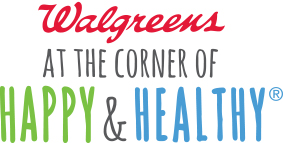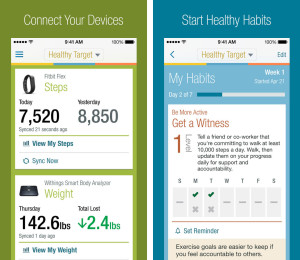
 With the goal of driving a digital health platform for well-informed, effective self-care, the nation’s largest retail pharmacy chain and prominent consumer-facing health information portal are allying to move from serving up pills and information to health “care.”
With the goal of driving a digital health platform for well-informed, effective self-care, the nation’s largest retail pharmacy chain and prominent consumer-facing health information portal are allying to move from serving up pills and information to health “care.”
Walgreens and WebMD launched their joint effort on 2nd October 2014, a few weeks after CVS/pharmacy re-branded as CVS Health.
Welcome to the reinvention of the retail pharmacy.
I spoke for a few minutes with David Schlanger, CEO, WebMD, and Alex Gourlay, President, Customer Experience and Daily Living, Walgreens, the day of the launch, to get early insights into the vision for the program.
There are compelling market drivers making the Walgreens-WebMD an obvious deal: the primary care shortage, consumers’ demand for more convenient access to health care services, consumers’ growing out-of-pocket costs and first-dollar coverage in high-deductible health plans, the growing use of mobile platforms for consumers’ health information search, and the brand equity in consumer-facing health that Walgreens and WebMD enjoy.
Around all of this is the re-formation of the health ecosystem driving a greater retail format – or un-format, given the growth and ubiquity of mobile. And, add into that, the ubiquity of Walgreens’ 8,200 storefronts in the U.S. The company mantra is that two thirds of Americans live within three miles of a Walgreens community pharmacy.
 This alliance extends the bricks store of Walgreens as a co-brand with WebMD, the most popular healthcare search engine on the interwebs. “WebMD” the brand has high brand equity, recognition, and trust: important assets for consumer health engagement.
This alliance extends the bricks store of Walgreens as a co-brand with WebMD, the most popular healthcare search engine on the interwebs. “WebMD” the brand has high brand equity, recognition, and trust: important assets for consumer health engagement.
For WebMD, Walgreens consumers can drive more scale in terms of eyeballs and users of the company’s new health management program, Healthy Target, digital tools to help people manage chronic conditions such as diabetes and heart disease.
Walgreens customers who participate in these WebMD programs can accumulate more points in the pharmacy’s Balance Rewards loyalty program, which launched in 2012 by recognizing consumers’ physical activity digitally tracked through some of the most popular consumer digital health tracking tools — Fitbit, Jawbone, Withings, among other devices. Now, tracking blood sugar, nutrition, blood pressure and other more “medical” metrics can gather points, which turn into financial rewards to spend at Walgreens. No doubt other reward categories will be added to the pharmacy’s gift card option.
The venture’s press release states that the goal of the venture is to incent consumers to make healthier choices “at home, work, and on-the-go.”
Health Populi’s Hot Points: The digital health platform space is getting very crowded: at HIMSS 2014, there was a growing array of patient portals being marketed on the basis of patient engagement for HITECH incentives. There are platforms for social networking between patients and clinicians, such as MedHelp and HealthTap, platforms for physician networking, and emerging portfolio of platforms of patient-provider teaming in the health care system.
The Walgreens-WebMD platform that’s forming is largely outside of the health “care” ecosystem: although WebMD also operates Medscape, the physician information network, this venture focuses firmly on consumers’ health data: a kind of personal health record, self generated data that, today, won’t flow into the patient’s electronic health record. That day may come, in 2016 or 2017 based on force of meaningful use stage 3, sheer consumer demand for the data liquidity, and/or Apple HealthKit (and other market-based programs).
Consumers will be faced with a growing array of “platforms” where their data may reside. At first, when signing into a loyalty program, it may be sufficient to gain points for dollars to purchase goods from a pharmacy from which one lives 2 or 3 miles.
Over time, the value for people in health is real and lasting behavior change, with real outcomes being lived and felt at home, playing on the ground with grandkids, on the tennis court, in the bedroom, and anywhere else people want to feel their vitality.
Will Walgreens+WebMD have the secret in the behavior change sauce? It will take more than a pharmacy gift card to make that a sustainable reality, but getting personalized information to the right person at the right time in a well-designed way can help. Getting the incentives right — that’s going to be the most artful aspect of this alliance, as yet TBD.




 Thank you FeedSpot for
Thank you FeedSpot for